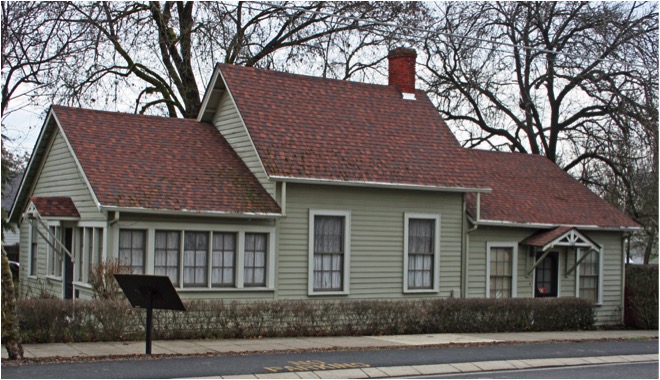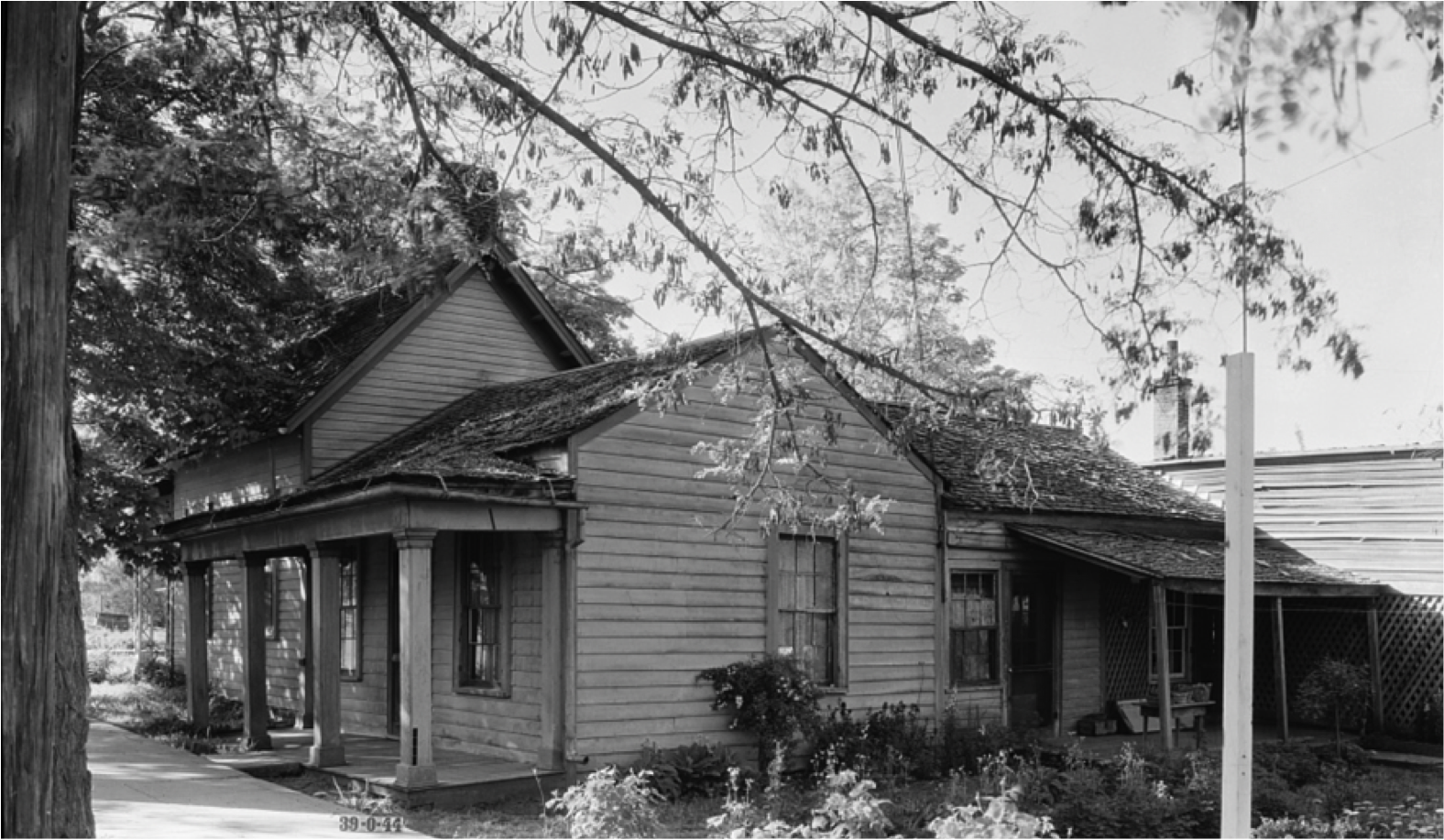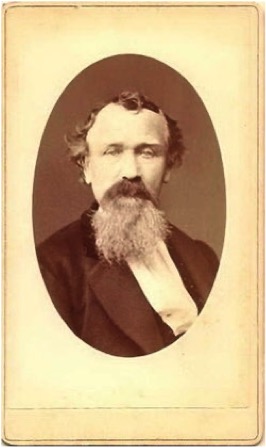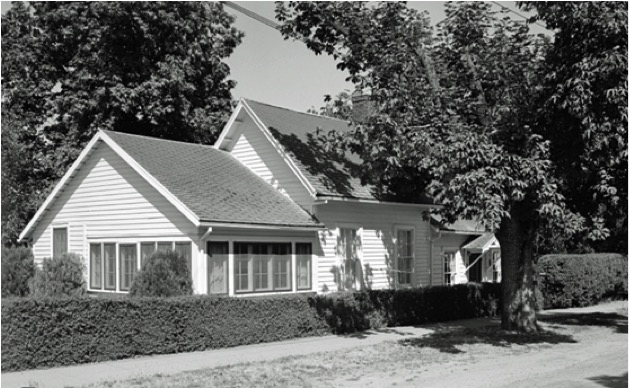|
A Virtual Walk Through Jacksonville History
Stop 37: Sifers/Savage House
Crossing Oregon Street, we’ll stop for a moment and talk about the Sifers/Savage House, here at 160 West C Street. It’s one of the oldest residential houses still standing in Jacksonville.
 Sifers-Savage-Combest House, 2010. Sifers-Savage-Combest House, 2010.
Also known as the Combest House for its more recent occupants, the Combest family, the eastern section was probably built in the early 1860s. The builder and architect are unknown. The structure has received several additions and alterations and presents a much different image from the original single-story dwelling.
 Sifers-Savage House, 1934, showing the original 1-story house at this end. Sifers-Savage House, 1934, showing the original 1-story house at this end.
The porch was later removed. Photo courtesy of SOHS.
John B. Sifers, a native of Prussia, arrived in Jacksonville no later than 1855, since he is listed in the Pioneer Census for that year, referenced in the minutes of the formation of the “Independent Rangers Military Company,” and paid for service as court bailiff per an October Court docket. By 1856 he served as Clerk of the District Court, a position he held for at least two years. In 1856, Sifers was also appointed Jacksonville Postmaster. In 1858 he was a Jackson County delegate to the state constitutional convention.
Sifers held the deed to the property on which the eastern portion of this house sits in 1859 and was probably responsible for its construction. At the time, only one other dwelling existed on this block.
Although the 1860 U.S. census lists Sifers as a “teamster” (i.e., a person transporting goods by horse-drawn wagon), by 1858 he was also a joint proprietor of the Plaquemine Restaurant, then located at the current site of the Kubli Building at 115 West California, and by 1859 he had received a liquor license. Sifers was also joint owner of a quartz mine claim.
In 1863, Sifers married Elizabeth Penninger. By the mid-1960s he and his family moved to Kerby (now Kerbyville) in Josephine County, where Sifers became a “flour producer” (miller) and eventually a county judge and state senator.
 Charles Savage. Charles Savage.
Source: Find A Grave. |
Sifers sold his lot and structure to Charles W. Savage in 1866. Within days of that purchase, Savage bought the lot immediately to the west, creating the current parcel configuration. He expanded the original one-story house and was likely responsible for many of the later additions.
Savage was born in Maine. According to an 1882 record of early settlers, Savage “spent several years in seafaring and crossed the plains with Col. Fremont’s company, to California, in 1845, and from thence came to Oregon in 1846.” He arrived in Jacksonville in the late 1850s and he too initially worked as a teamster. 1861 records show him being recompensed for “graveling the sidewalk at Court House Block” and for making a “Horse Rack” for the courthouse. In 1863 he was appointed County Assessor.
By the mid-1860s, Savage had opened the Pioneer Grocery Store on California Street, and in 1869 he was the owner/proprietor of one of Jacksonville’s oldest and most successful saloons, the New State Billiard and Drinking Saloon, located on the present site of Redmen’s Hall. According to the 1870 census, he and his wife had four children and a Chinese cook.
In 1873, Savage sold the property to Henry Judge, who was in the saddlery and harness making business in partnership with Jeremiah Nunan. Judge and Nunan were married to sisters; Judge to Anna O’Grady; Nunan to Delia O’Grady. After owning the property for only three years, Judge sold it to Nunan.
Nunan was one of Jacksonville’s wealthiest and most highly respected residents. After breaking his business relationship with Judge, he established a very successful general merchandise store. He also owned considerable property and several mining claims around Jackson County. He was one of the heaviest taxpayers in 1903.
Nunan built for himself and his family one of Jacksonville’s most elaborate 16-room Queen Anne style homes from the George F. Barber’s The Cottage Souvenir catalog at 635 North Oregon Street. However, Nunan and his family lived in the Sifer/Savage house until their mansion was completed in 1892.
 Sifer-Savage-Combest House, 1970s. Photo Source: HABS Ore-44. Sifer-Savage-Combest House, 1970s. Photo Source: HABS Ore-44.
Sources Cited
Evans, Gail E.H. State of Oregon Inventory of Historic Properties, “John B. Siphers/Charles Savage House,” January, 1980.
Southern Oregon History Revised, truwe.sohs.org/.
Ancestry.com
|